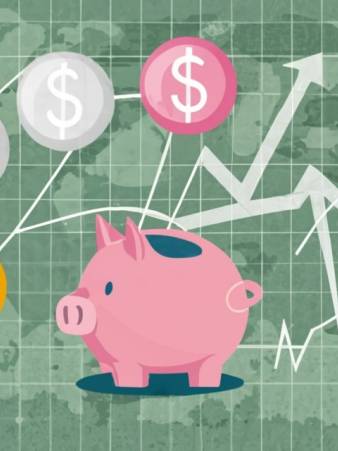Bonds: Understanding the Fundamentals of Fixed-Income Investments
You're ready to dive into the world of investing, but the waters can be deep and murky. Bonds are your life raft; they're steady, reliable, and easier to understand than you might think. In this guide, you'll learn the ABCs of bonds, from the different types to how to calculate yields and weigh risks. Let's break down the basics and build your confidence in navigating the currents of fixed-income investments. Welcome to Bond Bootcamp!
Key Takeaways
- Bonds earn interest over time and involve lending money to a company or government.
- Different types of bonds include government, corporate, municipal, and international bonds.
- Yield is the amount of money earned from a bond, shown as a percentage, and can be calculated using current yield or yield to maturity.
- Risks in bond investing include interest rate fluctuations, credit risk, inflation, and market liquidity.
Bond Basics Explained

Bonds are a type of investment that you can buy to earn interest over time, providing a predictable income stream. When you buy a bond, you're lending money to a company or government. In return, they promise to pay back the money on a specific date. Until then, you get interest. It's like a loan you give, and the interest is your reward for lending the money.
Interest rates are key to how much you earn from bonds. If interest rates are high, new bonds pay more. If rates are low, new bonds pay less. Your bond's value can go up or down based on these rates. You need to watch them to know when's best to buy or sell.
Credit quality matters too. It's about how likely it is that the borrower will pay you back. Higher credit quality means less risk. Lower credit quality means more risk, but you might earn more interest to make up for it.
Now, you've got the basics. Next up, let's dive into the different types of bonds available.
Types of Bonds Available

You'll commonly encounter several distinct types of bonds, each with unique characteristics and risks. Let's look at a few you might see.
First, there are government bonds. These are pretty safe. The government backs them up, so you're likely to get your money back. But, because they're so safe, they don't pay much interest. Think of it like this: less risk, less reward.
Then, there are corporate bonds. Companies issue these to raise money. They usually offer higher interest rates than government bonds. Why? Because there's a bit more risk. If the company has troubles, you might not get your money back.
Municipal bonds are another type. Cities or states issue these. Sometimes, they don't tax the interest you earn. That's a nice perk, but remember to check on the bond's liquidity. Bond liquidity means how easy it is to sell your bond if you need cash. Some bonds are easier to sell than others.
Lastly, there are international bonds. These come from companies or governments in other countries. They can be exciting because of different interest rates and risks. But, don't forget, they can be tricky. You've got to think about currency changes and the stability of the country.
Calculating Bond Yields

To accurately gauge a bond's profitability, you need to understand how to calculate its yield. The yield is how much money you make from a bond. It can change when interest rates change. Think of yield as the bond's paycheck to you. It's shown as a percentage.
There are two main types of yields. The first type is called "current yield." To find this, you divide the bond's annual interest by its price. So, if a bond pays $50 a year and costs $1000, its current yield is 5%.
The second type is "yield to maturity" (YTM). This is more complex. It takes into account all the money you get from the bond until it ends. You look at the interest, the price you paid, and the bond's face value. YTM calculations can be tricky; sometimes, you might want to use a calculator or computer.
Yield curves are graphs that show yields for different bonds over time. They help you see how interest rates might change in the future.
Knowing how to figure out yields is important. It helps you decide if a bond is a good deal. Next, you'll learn about the risks you face when investing in bonds.
Risks in Bond Investing

When investing in bonds, you're exposed to several risks, including interest rate fluctuations, credit defaults, and inflation. If rates rise, your bond's price drops. That's how it goes. But remember, if you hold the bond to maturity, you'll likely get back the bond's face value plus interest. That's the plan, at least.
Credit risk is another worry. It's about the borrower's ability to pay you back. If they can't, you might lose money. Keep an eye on credit spreads — the difference in yield between bonds with different credit qualities. Wider spreads often mean higher risk.
Then there's inflation. It's the enemy of your bond's buying power. Over time, inflation can eat into your interest earnings. That's no good if you want to keep your money's worth.
Lastly, don't forget market liquidity. This is about how easy it is to sell your bond. If it's hard to find a buyer, you might have to accept a lower price. You don't want that. So, think about liquidity before you buy.
Remember these risks, and you'll be smarter about bond investing. It's about being aware and prepared.
Building a Bond Portfolio

As you construct your bond portfolio, diversification is key to managing risk and achieving a balanced investment strategy. You'll want to spread your investments across different types of bonds. This way, you're not putting all your eggs in one basket. Let's break down the steps:
- Bond Laddering: Buy bonds that mature at different times. This means you'll have money coming back to you at regular intervals. You can then reinvest or use it as you see fit.
- Duration Targeting: Pick bonds with different durations. This helps you manage how sensitive your portfolio is to interest rate changes. Short, medium, and long-term bonds can balance each other out.
- Mix It Up: Include a variety of bonds, like government, municipal, and corporate. Each type has its own risks and benefits.
Conclusion
You've journeyed through the world of bonds, from the basics to portfolio-building. Remember, even "safe" bonds carry risks—like Jane, who learned the hard way when interest rates spiked. Her bond values tumbled. But don't let fear hold you back. Start small, diversify, and keep learning. Bonds aren't just for the wealthy; they're your step towards a steadier financial future. Embrace the challenge, and let your investments grow with you.




0 Comments: